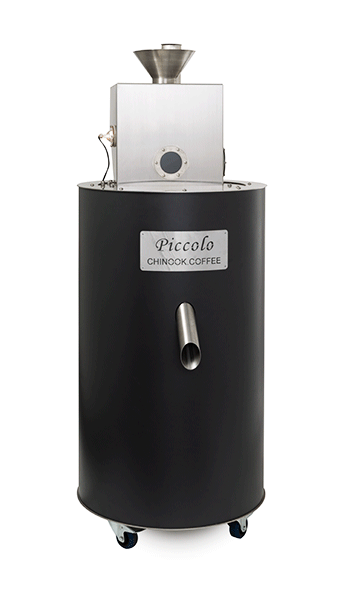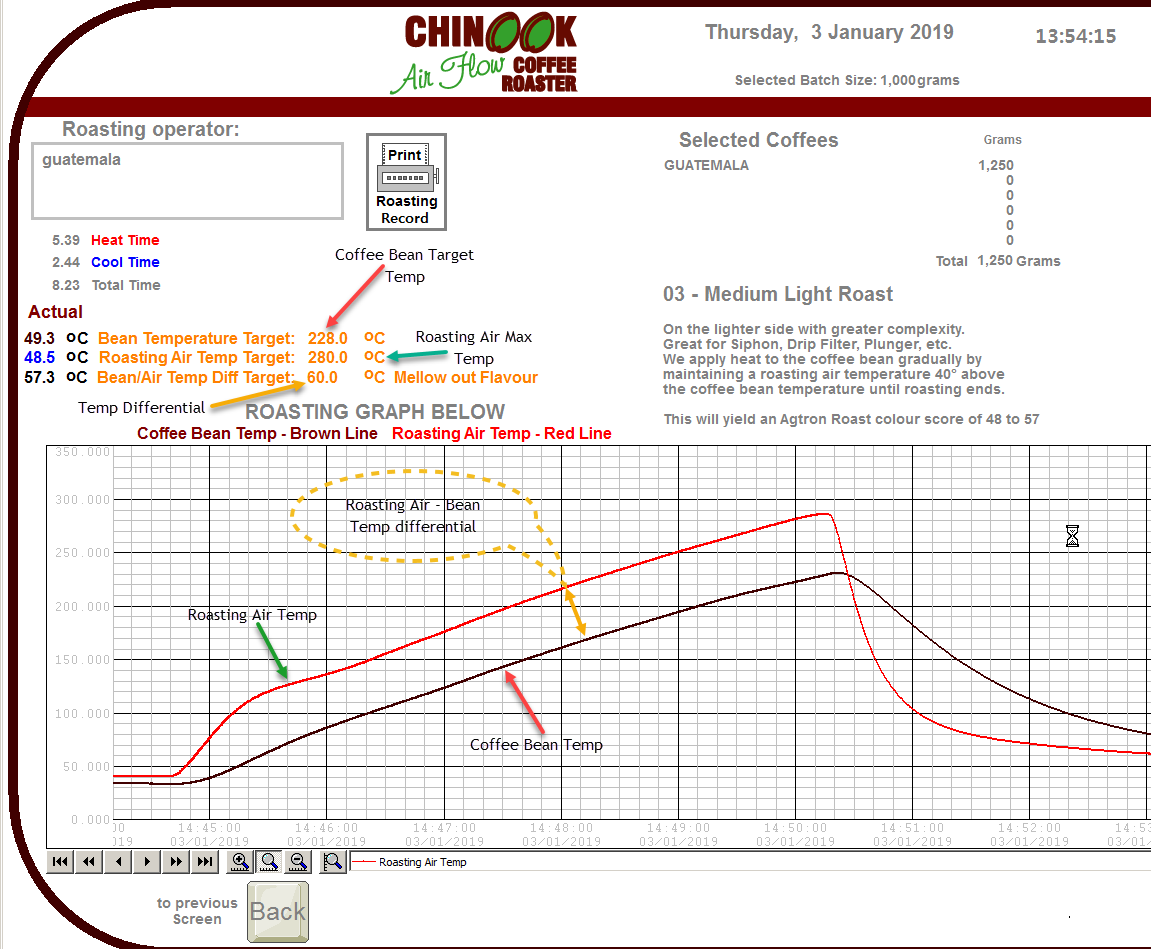The Piccolo Chinook coffee roaster is used for blend & roast profile development. Once the roasting curves which produce the desired taste have been determined, a recipe is created that contains the appropriate parameters. This recipe allows repeated roast batches to be produced on all Chinook roasting configurations without operator intervention.
The chinook reactive roast management control system provides:
- accurate coffee bean temperature measured 10 time per second
- accurate roasting air temperature measured 10 time per second
- graphical visualization for each of the above over time
- recipe control to assure consistent results with each defined roast batch
- automatic end of roast evacuation of roasted coffee into the cooling tray
Below is a screen shot of the chinook reactive roast management software
Roasting coffee is easy and predictable provided that we are able to accurately measure the temperature of the coffee while roasting and quickly adjust the roasting air temperature as required.
The Rotating Fluidized Bed within which the roasting coffee is suspended allows the accurate measurement of the coffee bean temperature. Only the coffee bean temperature is measured.
This reading is not influenced by the roasting air temperature beyond the way that the air heats the coffee. This simplifies the monitoring of the roasting process.
The roasting air heats each coffee bean equally. This equal heating is a by product of the way the beans are levitated in a rotating fluidized bed caused by the heated air flow.
The heat is applied only through convection (not conduction or radiation). This simplifies the control of the applied heat. The roast management software adjusts the air heat 10 times per second. This new temperature reaches each coffee bean within a fraction of a second.

Above is the Piccolo Chinook coffee roaster. It is capable of roasting green coffee batch sizes from 500 gram to 4.0 Kgs.
Partial screenshot of the chinook reactive roast management control system
The red line graphs the temperature of the roasting air that is levitating the roasting coffee.
The brown line graphs the temperature of the roasting coffee beans.
The distance between these two lines is known as the roasting air to coffee bean temperature differential.
All temperatures are sampled 10 times per second.

